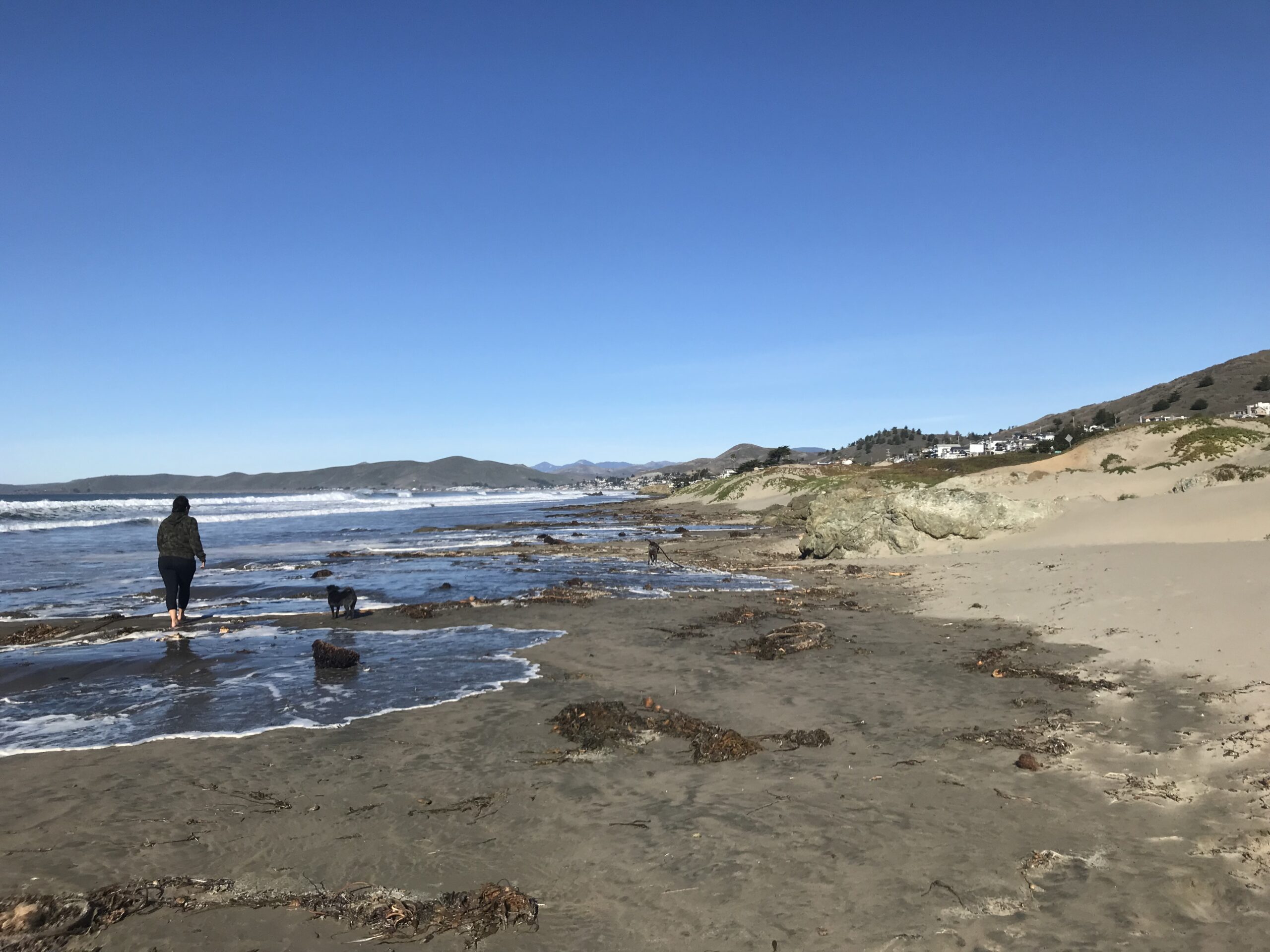Civil and Environmental Engineering Department Co-Hosts Events at Morro Bay and Avila Beach to Document Impacts of Climate Change
As the sun, moon and Earth align to create this season’s highest tides, residents of San Luis Obispo County have a unique opportunity to witness and document the king tides on Saturday, Nov. 16.
Cal Poly’s Civil and Environmental Engineering Department and Marine Sciences Program, in partnership with California State Parks and the Central Coast Aquarium, invite the community to two events where participants can experience the king tides up close, take photos to support climate change research and learn about the effects of rising sea levels on our coastlines.
Students from civil, electrical and mechanical engineering — who developed low-cost tide gauges to track coastal changes — are helping run Saturday’s events as part of their efforts to study and document sea-level impacts. Installed along the San Luis Obispo County coastline, these gauges measure tides and waves, providing critical data for monitoring ocean fluctuations and assessing flood risks.
“By observing and documenting king tides, we’re essentially looking into the future,” said Serena Lee, a researcher in Cal Poly’s Civil and Environmental Engineering Department and an oceanographer passionate about engaging the public in climate science. “It’s a powerful visual that helps us understand what higher sea levels might mean for our local communities and environment.”
The Science Behind the Tides
King tides occur when gravitational forces from the sun and moon reinforce each other, pulling ocean waters to their highest levels. While these tides are natural and predictable, they highlight how rising sea levels may affect our coastlines.
According to state projections, sea levels along California’s coast are expected to rise between 0.8 and 1.2 feet by 2050 and between 3.1 and 6.6 feet by 2100.
“Even simple images of water on the coastline can provide us with so much information,” Lee added. “It’s an easy entry point into the issue and helps people who may not think about climate change understand its real-world impact.”
Event Details
King Tide at Morro Bay
- Date and Time: Nov. 16, 9:20 to 10:30 a.m.
- Location: Morro Bay Museum of Natural History parking lot, off Morro Bay State Park Road
- Peak Tide: Between 9:45 and 10:05 a.m.
Join us at Morro Bay Estuary to photograph king tide water levels in Windy Cove and around the Morro Bay State Park Boardwalk. This effort will help visualize how extreme tides interact with our coastal environments.
King Tide at Avila Beach
- Date and Time: Nov. 16, 8:30 to 9:30 a.m.
- Location: Avila Beach Park, corner of San Juan and Front streets
- Peak Tide: Around 9 a.m.
Join us at Avila Beach to photograph king tide water levels along the shoreline and around key areas. This effort will help show the potential effects on local communities and ecosystems.
Contribute to the King Tides Project
Every photo tells a story. By capturing images of the king tides, you’re contributing to the California King Tides Project, a citizen science initiative that invites the public to document the highest high tides of the year. These images provide insight into how higher ocean levels could reshape our coastlines and communities.
Learn how to participate by uploading your photos via a web browser or free app. Your photos will be added to a map of this season’s king tide photos and may be used in presentations, exhibitions, websites and publications focused on sea-level rise, coastal initiatives and climate action. These images help scientists, planners, educators and policymakers better understand and prepare for the impacts of shifting ocean conditions and coastal vulnerabilities.
“We are breaking barriers between the public and science as we all try our best to solve this issue,” Lee said. “This is leading to more conversations and collaborations, which are key in our fight to adapt to climate change.”


